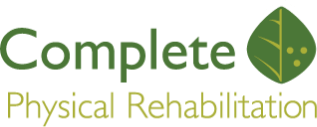It’s about that time of year again. The snow is melting, the deep freeze in the New York City area is slowly warming, and you’ve made up your mind: you want to get serious about running, maybe even possibly run your first race or marathon. But if you’re a new runner, either jogging outside one in a while or on a treadmill, the path to getting a little more serious about distance running can be a little bit confusing. For all of my clients, I always offer these tips when you want to step up your running game.
Get a Biomechanical Evaluation From A Physical Therapist
A Physical Therapist will be able to medically evaluate your fitness level, stride, and gait. This can be used to identify any possible problem areas, including risk of injury and improper running form. Some might say that seeing a medical professional for running is an unnecessary extra step, but in my opinion, when you’re dealing with the health of your feet, which are needed for a lot more than just distance running, I would take this extra step. Preventative medical care will always cost you less time and money than post injury medical care. In addition, a proper biomechanical running evaluation will help to point you in the right direction for gear. Which leads to the next tip…
Get A Pair Of Proper Running Shoes
Running specific shoes are tailor made to protect and comfortably support you through the rigors of distance running. But when you go to the store, the sheer number or styles, brands, and models can be overwhelming. A salesperson at the running store can give you a general idea, but a Physical Therapist, using your biomechanical evaluation, can be more specific and really zone in on exactly which shoes you should be considering.
Start Slow
Distance running is just like any other sport. If you wanted to become a more proficient basketball player, you wouldn’t go onto the court for the first time expecting to throw passes between your legs and shoot 24 foot three pointers. As with running, you shouldn’t try to go out and run 5 miles, 5 days a week right off the bat. In general, I recommend starting slowly, a mile or two a day, 1-2 days a week, just to get started, then build from there.
Strength Train On The Days That You’re Not Running
Building muscle through strength training in the gym has been medically proven to not only improve your overall health, but also reduce the risk of injury and improve your running performance. A personal trainer or a Physical Therapist can help you come up with a strength training program to help you along. I recommend 2-3 days a week on the days that you’re not running.
Use An AlterG Treadmill To Build Endurance And Cardio
The AlterG Anti-Gravity Treadmill is an amazing new technology that can allow you to really increase your cardio workouts while drastically reducing the possibility for injury by taking advantage of the treadmill’s weight reducing technology.

For my clients, we have them use the AlterG Treadmill in our Elizabeth and Jersey City clinics in addition to their roadwork. By reducing the strain on the legs and feet, we can really work on form and technique, while also increasing your endurance by safely having you run faster than you normally would on hard roads. And during extreme weather conditions, the AlterG has been used as a primary training tool when it’s just not feasible to run outside. The progress and results have been nothing short of amazing. For more information on the AlterG, visit our expanded AlterG Treadmill section.
Dr. James Pumarada is a Physical Therapist and co-owner of Complete Physical Rehabilitation, a Physical Therapy practice based in Elizabeth and Jersey City, NJ. As a Sports Therapy Certified Specialist, he has been specifically guiding and training runners of all experience levels for over 15+ years.

